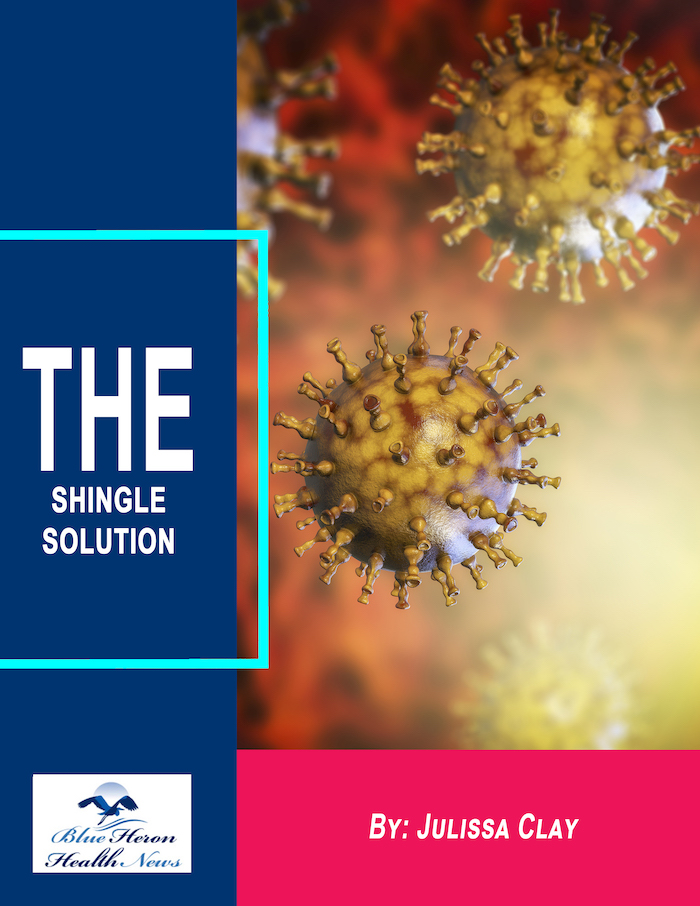
The Shingle Solution™ By Julissa Clay This eBook includes a program to treat the problem of shingle naturally. The author of this eBook, Julissa Clay, a practitioner in natural health, has killed the shingles causing virus completely to overcome the problem of PHN or Postherpetic neuralgia, one of the common complications caused by shingles. This program helps in melting PHN in a few weeks and make shingles a forgotten nightmare.
How can one track shingles symptoms to aid in treatment?
Shingles symptom monitoring can do a lot to manage the condition, understand its onset, and ensure timely intervention. Early intervention is essential to minimize the severity of the outbreak, reduce the risk of complications like postherpetic neuralgia, and hasten recovery. The following are means by which you can monitor shingles symptoms effectively:
1. Symptom Journal
✔️ Pain & Discomfort
Rate the intensity of the pain on a scale (e.g., 1–10), and indicate its location (e.g., chest, back, or face).
Watch for types of pain—burning, itching, sharp, or aching—because different types of pain may require different treatments.
Document the duration and any patterns of pain (e.g., does it worsen at night?).
✔️ Rash Appearance
Document the initial appearance of a rash—it may start as red patches or small bumps.
Take a daily photo of the rash’s progression so that you can see how it spreads or heals over time.
Record changes in rash appearance: blisters forming, bursting, or scabbing over.
✔️ Other Symptoms
Monitor additional symptoms such as:
Fever
Fatigue
Headache
Sensitivity to light or vision changes (if eye is involved)
2. Monitor Triggers and Exacerbating Factors
✔️ Identify Potential Triggers
Document any stressful events, illness, or immune-suppressing medications that may have triggered the eruption.
Track sleep quality and diet, as poor sleep or a weakened immune system can exacerbate shingles.
3. Track Treatment Response
✔️ Track Medications
Keep track of when you start taking antiviral medications (like acyclovir, valacyclovir, or famciclovir) and any side effects you experience.
Track pain management treatments you take, including:
Topical creams (like capsaicin or calamine lotion)
Over-the-counter pain relievers (acetaminophen, ibuprofen)
Prescription pain drugs (gabapentin for nerve pain)
✔️ Symptom Improvements or Worsening
Regularly check if the rash is improving or new blisters are forming.
Check if your pain is subsiding with medication and if you need to be adjusted.
4. Document Emotional & Psychological Impact
Stress and emotional health could be adding to symptom severity. Check if you are getting more stressed, anxious, or depressed because this will affect your recovery.
Monitor how the shingles rash is affecting your self-esteem or daily life, especially if it’s in visible areas like the face.
5. Monitor Symptoms Through an App
Apps like MyTherapy or Symple allow you to monitor symptoms daily, including pain intensity, rash development, medication intake, and general well-being.
Most apps have reminders for medication, and they provide visual reports that you can show to your doctor.
6. Monitor Complications Often
Postherpetic neuralgia (PHN): A common complication of shingles that produces persistent pain after healing of the rash. Watch for burning or stabbing pain that lingers after the rash is gone, and contact your doctor.
Eye involvement: If shingles develops around the eye (ocular shingles), watch for vision changes, redness, or sensitivity to light, and seek immediate medical attention to prevent permanent damage.
7. Talk to Your Healthcare Provider
Share your symptom log with your healthcare provider during follow-up appointments. This detailed record will help them assess how well the treatment is working, identify any complications early, and adjust your treatment plan if needed.
If symptoms worsen or new ones appear, contact your healthcare provider immediately for guidance.
8. Create a Daily Checklist
Develop a simple daily checklist to track key symptoms and actions, such as:
Pain level: 1–10 scale
Rash progression: Number of blisters or scabs
Medications taken
Other symptoms (fever, tiredness, etc.)
Sleep and rest quality
9. Use a Treatment Timeline
Create a timeline to mark significant dates such as:
First appearance of symptoms
When antiviral treatment began
When rash started to scab or heal
When pain stopped or changed
Any complications like PHN or eye involvement
In Summary
Tracking symptoms of shingles needs careful observation and documentation of the pain, rash formation, treatment response, and affect. It helps in the control of the illness, enabling early intervention, and providing your physician with valuable information for optimal management. Would you like a printable form or app recommendations to get started?
Shingles can significantly impact patients with already existing chronic illnesses, too. The load put on the immune system, coupled with pain and other effects of shingles, might complicate chronic disease care, as well as aggravate certain medical conditions. An explanation of how shingles can impact chronic conditions that are very common follows:
1. Diabetes
Blood sugar fluctuations: Shingles can place additional stress on the body, leading to higher blood sugar levels. This is especially problematic for people with diabetes because it might become harder to control blood sugar during a shingles outbreak.
Complications of healing: Healing is already compromised in diabetes, and shingles can lead to more prolonged periods of recovery. Shingles can result in longer healing times for skin lesions or open sores in people with diabetes, allowing infection to set in.
2. Heart Disease
Increased cardiovascular stress: Shingles can place a significant amount of physical stress on the body, which can affect heart health, especially in individuals with a history of heart disease or hypertension. Stress can result in high blood pressure and enhance the risk of a heart attack or stroke.
Pain and inflammation: Shingles pain, especially in the form of post-herpetic neuralgia (PHN), can cause chronic pain as well as heightened inflammation within the body that can exacerbate underlying cardiovascular illnesses.
3. Arthritis
Exacerbation of inflammation: In rheumatoid arthritis or inflammatory arthritis patients, shingles can heighten systemic body inflammation, which can lead to exacerbation of swelling or pain in the joints.
Medications and immune response: Some drugs used to control arthritis (e.g., immunosuppressants) have the side effect of making reoccurrence of shingles more likely because they weaken the immune system, thus making it difficult for the body to fight infection.
4. Chronic Respiratory Conditions (e.g., Asthma, COPD)
Greater risk of infections: Patients with chronic respiratory conditions are already at higher risk of developing infections, like pneumonia. Shingles occurring in the vicinity of the chest or lungs (e.g., torso shingles) may increase the risk of respiratory complications.
Drug interactions: Medications employed to manage asthma and COPD, especially steroids, can reduce the immune response and enhance the likelihood of developing shingles along with complicating recovery.
5. Chronic Kidney Disease (CKD)
Immune system weakness: Chronic kidney disease patients have a weakened immune system either due to the disease or medications (e.g., immunosuppressants, dialysis). This makes them more susceptible to shingles and can cause a more complicated infection.
Lengthy recovery period: Since the function of the kidneys is already compromised in CKD patients, recovery from shingles will be longer, and secondary bacterial infections may develop.
6. HIV/AIDS
Weakened immune system: People with HIV/AIDS are more susceptible to such infections as shingles because their immune systems are compromised. Shingles may also recur more frequently and intensely.
More intense outbreaks: People with untreated or uncontrolled HIV may have larger, more painful shingles outbreaks, and the rash may be longer-lasting.
7. Cancer (and Cancer Treatment)
Weakened immune system from treatment: Treatment for cancer, including chemotherapy and radiation therapy, can weaken the immune system and increase the risk of shingles outbreaks. Those with cancer might also be at a greater risk for more severe complications, such as post-herpetic neuralgia.
Management of pain: Both shingles and cancer result in extreme pain, making it harder to treat and requiring cautious management of pain relief.
8. Mental Health Conditions (e.g., Depression, Anxiety)
Exacerbation of mental illness: Pain and discomfort resulting from shingles, as well as potential long-term sequelae such as post-herpetic neuralgia (PHN), can exacerbate mental illness such as depression and anxiety.
Stress: Further stress at having to manage an outbreak of shingles may heighten levels of anxiety, particularly in individuals who already suffer from chronic mental illness.
9. Obesity
Compromised immune system: Obesity is often associated with chronic inflammation and weakened immune response, which makes it more difficult for the body to fight off infection like shingles. Obesity could also lead to an extended recovery time from an attack of shingles.
Increased risk of complications: Shingles can be more severe in people who are obese, and they can develop more complicated shingles, such as increased chances of post-herpetic neuralgia (PHN), which is hard to treat and lasts for several months.
Important Considerations in the Treatment of Shingles in People with Chronic Illnesses:
Early treatment: Prompt antiviral therapy can reduce the severity and length of shingles, especially among people with chronic illness.
Vaccination: Adults aged 50 years and older, including those with chronic disease, should be vaccinated with the shingles vaccine (Shingrix) since it will stop outbreaks or reduce the severity of symptoms.
Monitoring for symptoms: Individuals with chronic disease must monitor their symptoms closely and see a physician if they have a shingles outbreak since complications can arise more quickly.
Integrated care: Patients with chronic conditions should work closely together with their doctors in order to manage both the shingles infection as well as any associated conditions so that they are well-coordinated.
Do you wish to know more regarding the management of shingles as well as any specific chronic conditions?

The Shingle Solution™ if you are suffering from shingles then The Shingle Solution can be the best program for you to relieve your pain and itching by using a natural remedy. It describes the ways to use this program so that you can feel the difference after using it as directed. This natural remedy for shingles can also help in boosting your immune system along with repairing your damaged nerves and relieve pain and itching caused by shingles